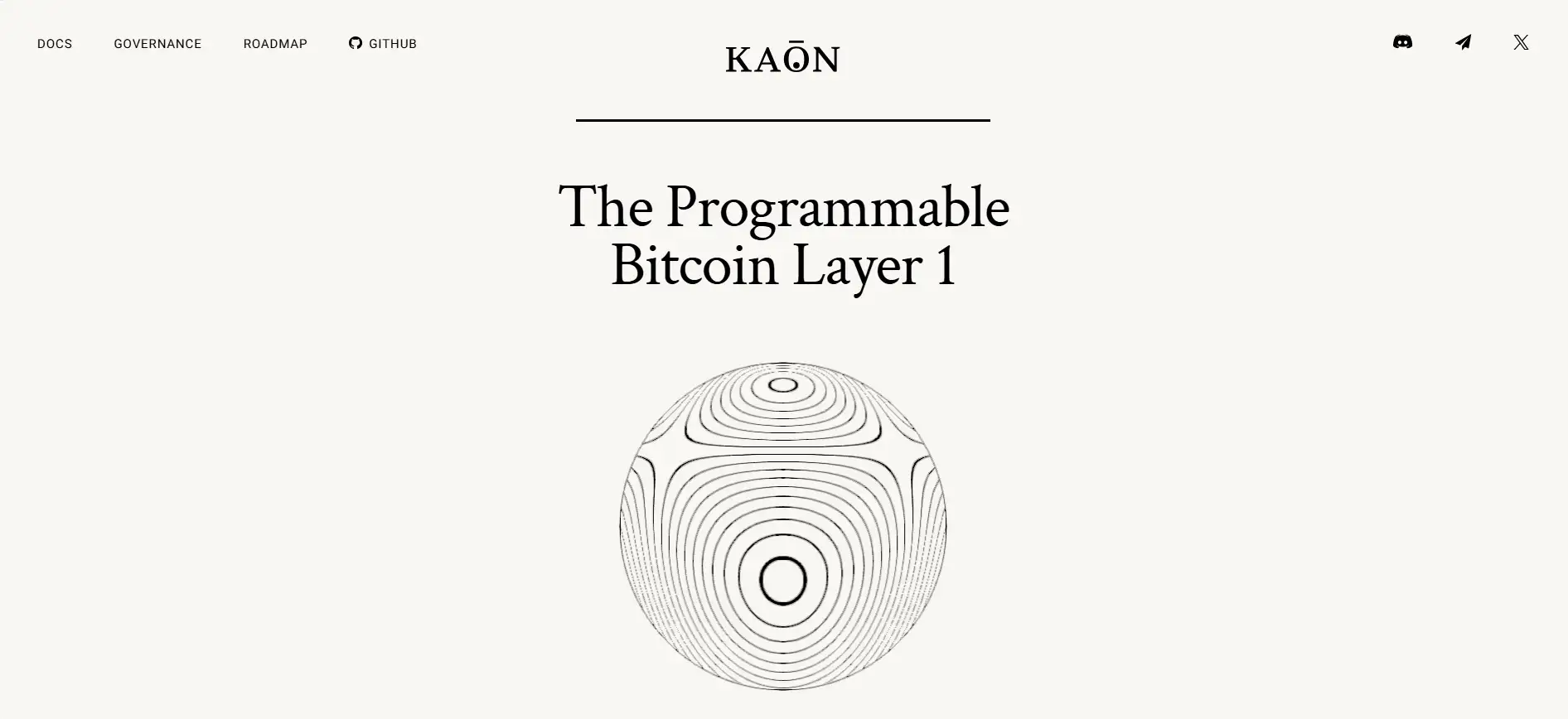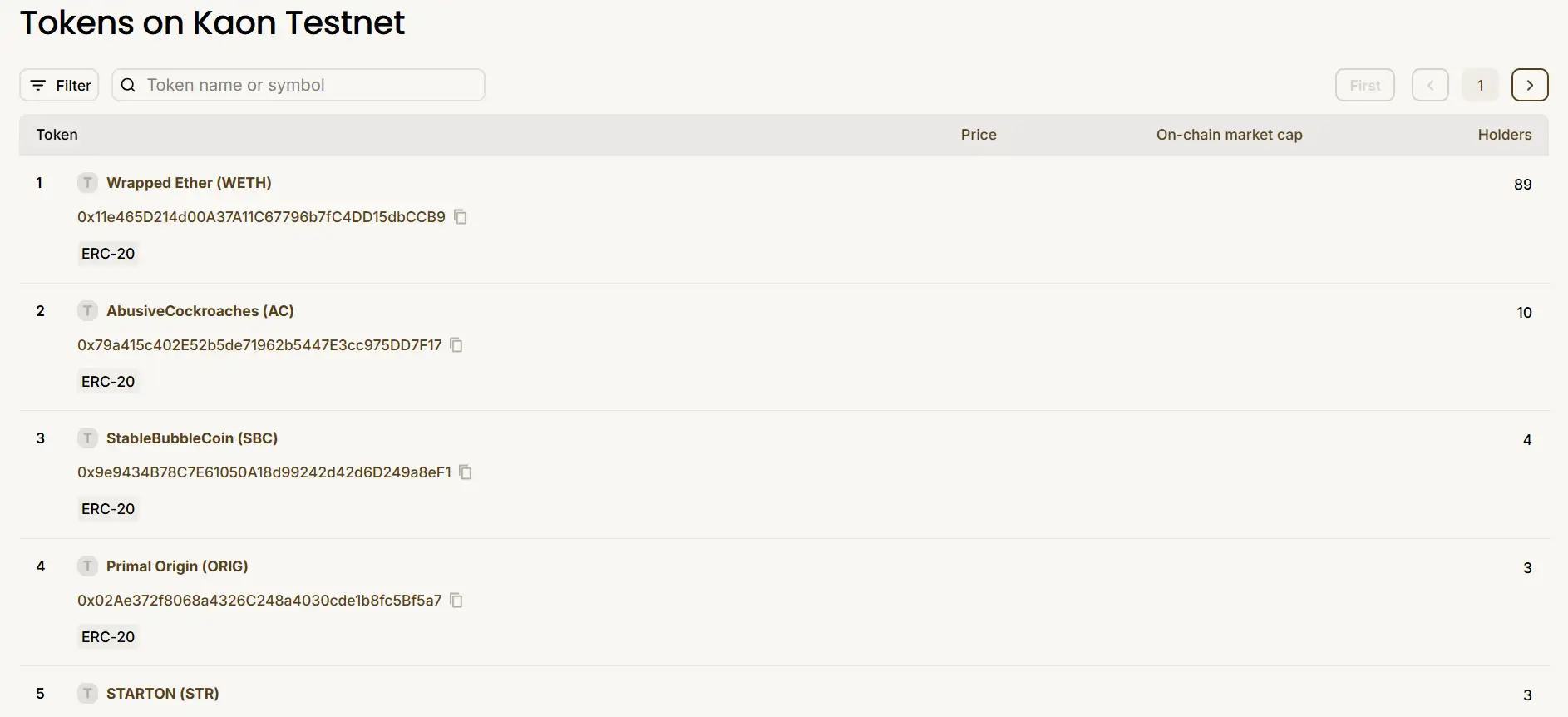About Kaon
Kaon is a revolutionary blockchain protocol aiming to bring native programmability to Bitcoin through a fully EVM-compatible, Layer 1 architecture. By preserving Bitcoin’s UTXO model and security foundation, Kaon enables cross-chain smart contracts, composability, and seamless interaction with Ethereum tools—without relying on wrapped tokens, bridges, or oracles.
With its unique node augmentation system and consensus architecture, Kaon allows developers to build and deploy advanced decentralized applications that interact directly with Bitcoin, creating a secure and trustless alternative to traditional cross-chain solutions. From institutional-grade DeFi to user-friendly wallets and dApps, Kaon unlocks Bitcoin’s potential as a truly programmable and interoperable ecosystem.
Kaon is building the most secure Bitcoin-native Layer 1 blockchain that brings EVM compatibility and cross-chain functionality directly into Bitcoin’s infrastructure—without altering its fundamental architecture. Unlike other platforms that rely on bridges or wrapped assets, Kaon enables native programmability on Bitcoin by augmenting existing nodes to introduce stateful smart contract support while retaining the original UTXO transaction model.
At the core of Kaon's innovation is a layered architecture combining a Byzantine Fault Tolerant (BFT) consensus mechanism and Delegated Proof of Stake (dPoS) for validator rotation and security. This infrastructure supports powerful primitives like mirrorBTC, which mirrors native BTC rather than wrapping it, and supports dual-language nodes that understand both Bitcoin and Ethereum natively.
Kaon's ecosystem is built to remove the need for trust-based infrastructure. It eliminates intermediaries like oracles and bridges by using secure Multi-Party Computation (sMPC) groups, a Cross-Chain Mempool, and an augmented node layer that triggers programmable logic on the Bitcoin network. This unique approach allows for native DeFi on Bitcoin, including staking, lending, borrowing, and yield farming.
Kaon provides powerful features for developers and institutions: public consensus-driven governance, 1100 TPS throughput, 8-second block times, and sub-penny gas fees. Full Ethereum RPC support ensures compatibility with tools like MetaMask and Blockscout, while the system’s 1e-18 denomination model reduces fee granularity and optimizes storage.
Compared to competitors like Rootstock or Stacks, Kaon stands out by maintaining Bitcoin’s UTXO model and delivering native smart contract execution without compromising decentralization. It bridges the gap between Bitcoin's unmatched security and Ethereum's programmability—without using a bridge at all.
Kaon provides numerous benefits and features that set it apart in the Bitcoin and cross-chain infrastructure landscape:
- Bitcoin-Native Security: Maintains the UTXO model, Bitcoin addresses, and script validation while extending programmability.
- MirrorBTC: Securely mirrors native BTC on-chain without wrapping, maintaining on-chain traceability and user control.
- Full EVM Compatibility: Supports Ethereum smart contracts and tools with native Bitcoin-level security, enabling composability and scalability.
- Public Consensus: Uses dPoS and BFT systems to ensure trustless validator rotation and network resilience.
- Gasless Transactions: Users can interact with dApps without needing to hold gas tokens, improving usability and accessibility.
- Cross-Chain Interoperability: Enables lending, borrowing, staking, and DeFi across chains—without bridges or oracles.
- Developer-Ready Infrastructure: Full RPC support, MetaMask integration, and support for RLP transactions and token creation.
Kaon makes it easy to begin building or exploring cross-chain Bitcoin-native dApps:
- Connect to the Kaon Testnet: Visit explorer.testnet.kaon.one and click “Add Kaon Testnet” to add the network to MetaMask.
- Request Test Tokens: Go to faucet.testnet.kaon.one and submit your wallet address to receive KAON testnet tokens.
- Deploy Smart Contracts: Use Kaon’s Token Generator to deploy ERC20 tokens directly on Kaon’s EVM-compatible infrastructure.
- Create Liquidity Pools: Visit Uniswap on Kaon Testnet to set up liquidity for your custom tokens.
- Explore UTXO-EVM Use Cases: Build or test apps that interact with both Bitcoin and Ethereum logic using Kaon’s dual transaction architecture.
Kaon FAQ
Kaon introduces smart contracts on Bitcoin by augmenting Bitcoin nodes with subprograms that create synthetic statefulness. This allows native UTXO transactions to interact with an EVM-compatible execution layer—without wrapping BTC or relying on intermediaries. Developers can use standard Ethereum tools while still benefiting from Bitcoin’s security and transaction model. Learn more at Kaon’s official site.
mirrorBTC is Kaon’s secure on-chain representation of native BTC. Unlike wrapped tokens that require custody and bridging, mirrorBTC is directly mirrored from Bitcoin via cryptographic traceability, preserving the identity and security of the original asset. It avoids third-party risks and maintains full Bitcoin compliance within Kaon’s system. You can explore mirrorBTC on Kaon’s platform.
Kaon supports both Bitcoin's UTXO model and Ethereum’s EVM natively. This means developers can deploy smart contracts while leveraging Bitcoin’s transaction structure, privacy features, and security model. With support for tools like MetaMask and recursive RLP transactions, Kaon provides an advanced, interoperable development environment for cross-chain dApps. Visit Kaon’s developer docs to get started.
Kaon eliminates the need for bridges and oracles by enabling native communication between Bitcoin and EVM layers. Using a Cross-Chain Mempool, sMPC groups, and a BFT consensus layer, Kaon validates and relays transactions securely within its own network. This architecture removes central points of failure and enhances trustless interoperability. Learn more at kaon.one.
To create a token, use Kaon’s Token Generator. Enter your token name, symbol, and supply, then deploy using MetaMask. To launch a liquidity pool, go to Uniswap on Kaon, select “Create a pair,” and approve your token. Within minutes, you’ll be trading on Kaon’s EVM-compatible Testnet—powered by native Bitcoin architecture.
You Might Also Like












